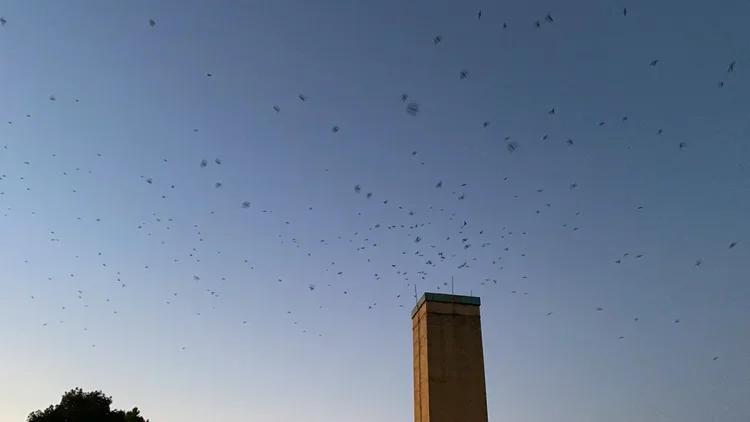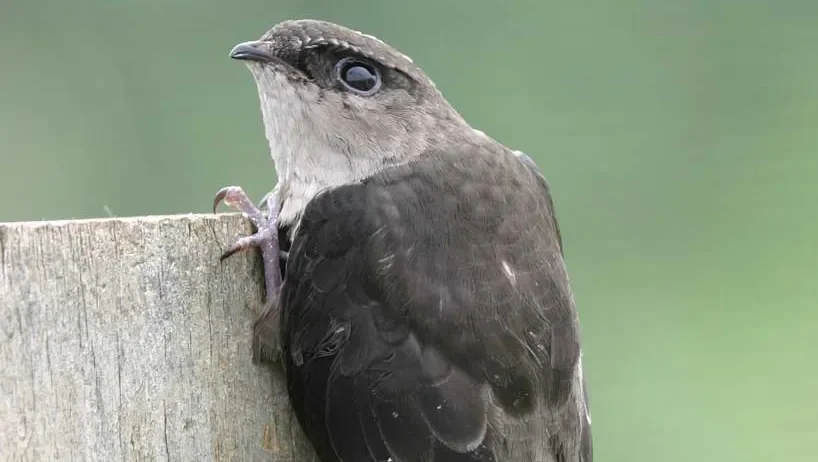Chimneys are Habitat!
Help protect a critical Chimney Swift roosting site
The chimney at Cherokee Heights Middle School is a valuable roosting site for hundreds (and often thousands!) of chimney swifts during their annual migrations.
The school is in need of a rebuild, which unfortunately means the chimney will come down sometime in 2026 or 2027.
The kids need a new school. And swifts need this site for roosting. We can do both! Learn about our vision for a faux chimney attached to the new school.
Cherokee Heights chimney. Photo by Sandy Schwab
Stay in the loop on this project!
What is a tipping point species?
Chimney Swift in flight. Photo by Sean Williams/Macaulay Library
According to the State of the Birds 2025 Report, Chimney Swifts are a “Tipping Point Species,” which means that they have lost over 50% of their population over the past 50 years. Tipping Point Species are at risk of further rapid losses if focused research and conservation efforts to combat this decline are not implemented.
Chimney Swift populations are decreasing largely due to the loss of suitable nesting and roosting sites. Historically, these birds nested in hollow trees, but as forests were cleared, they adapted to chimneys in homes and buildings. In recent decades, however, many chimneys have been capped, removed, or built in ways that prevent swifts from accessing them. These changes, as well as the loss of large, open chimneys found in schools and factories, are causing Chimney Swifts to struggle to find the habitat they need to survive.
Why is the Cherokee Heights Middle School Chimney so Important?
Swifts entering Cherokee Heights Middle School chimney. Photo by Brenna Marsicek/SoWBA
During the peak of fall migration, over 1,500 Chimney Swifts can be seen entering the Cherokee Heights chimney each night! This makes it among the largest documented swift roost sites in Wisconsin, and one of the most significant sites on the swift migration path to South America. See the map below to view other major roost sites on this path.
Unfortunately, the Cherokee Heights chimney is connected to an outdated school facility that needs to be rebuilt. The existing chimney cannot be preserved, so we are advocating for the chimney to be replaced with a similar one nearby, which can continue to host the many swifts that rely on this roosting site
Major Swift Roosting Sites on the Migration Path (hosting >1,000 swifts)
Will the Replacement Chimney work?
Chimney Swift perching. Photo by George L. Armistead
Swift towers, or faux chimneys, have proven to be an effective conservation strategy for Chimney Swifts, offering viable replacements for nesting and roosting sites when the previously inhabited structures must be torn down or capped off. These structures are designed with features like rough interior surfaces and temperature-stabilizing insulation to increase the likelihood of being adopted by Chimney Swifts.
A notable success story comes from the Manitoba Chimney Swift Initiative, an organization who constructed four swift towers at the Selkirk Mental Health Centre as replacements for three nearby swift chimneys that were torn down. All four towers, built in 2021, were used by chimney swifts that same breeding season, and three of them hosted successful nesting and reproduction by 2024. This example demonstrates that, when designed and sited carefully, swift towers can support swifts even in northern climates. As such, we are optimistic about building a viable swift tower at Cherokee Heights Middle School.
Actions you can take NOW to support Chimney Swift conservation:
Contact the School District.
Send a friendly message to the Madison Metropolitan School District to encourage them to support construction of the faux chimney and preserve this critical roosting site.
Pledge a donation.
The new swift chimney may cost $40,000+ to build. We now need pledges of $1k or more to get this project started. Once we have enough pledges, we can launch a public campaign to raise the rest of the money we will need!
Email Matt Reetz, Executive Director, at mreetz@swibirds.org to discuss a pledge donation!
Attend our Swift Events.
Help us raise awareness for Chimney Swift conservation and enjoy the spectacle by attending and bringing your friends to our Swift Night Out and Swift Week events this fall!
Educate yourself on the issue.
Learn more about Chimney Swifts, the threats that they face, and how to be an effective conservation advocate for these feathered friends.








